In the last couple of years, Apple has started to pay more and more attention to the issue of insufficient memory on iPhone. Last year the base version iPhone contained 32GB, and this year it was 64GB. But many of us still have phones with 16GB of memory. To help us, Apple continues to add features to iOS that help save memory.
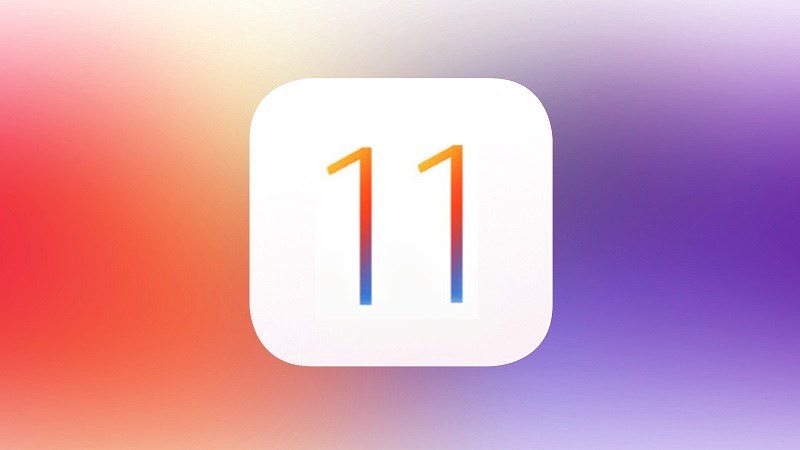
iOS 11 also has these features. The new version of the system uses HEIF for photos and HEVC for videos. Both formats help save 50% of memory while maintaining quality. Additionally, iOS 11 has a whole section on memory management guidelines. If your iPhone is running out of memory, try the tips below.
- How to save memory for iPhone with iOS 11
- 1. Unload apps automatically
- 2. Follow the new recommendations in the repository
- 3. Delete unnecessary photos and videos
- 4. Use the media library iCloud or Google Photos
- 5. Delete application content
- 6. Clear your Safari cache
- 7. Remove the 'live part' of LivePhotos
- 8. Empty the folder with recently deleted photos
- 9. Automatically delete old messages
- 10. Remove attachments to messages
- 11. Remove extra votes Siri
- 12. Optimize storage for Apple Music
- 13. Clear your iTunes cache
- 14. Disable automatic media download from WhatsApp
- 15. Try downloading a huge app or movie
- Coming soon: storing messages in iCloud
- Last option: reset device settings
How to save memory for iPhone with iOS 11
1. Unload apps automatically
The first thing you should do is find apps that you can uninstall. You can do it manually in Settings -> General-> Storage iPhone (or iPad). There you can see which apps are taking up the most memory.
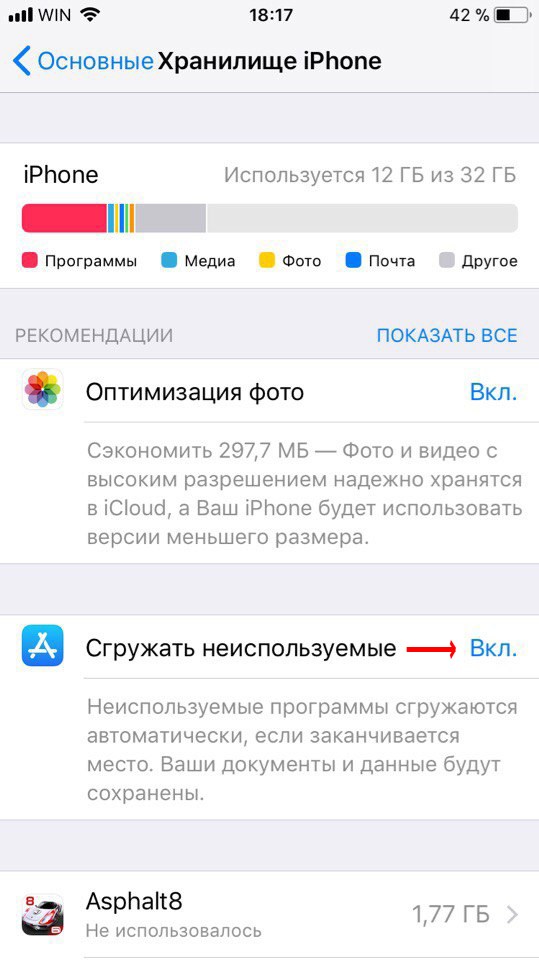
iOS 11 can do this automatically. At the top of the Storage section iPhone just enable the Unload unused option.
This feature keeps track of which apps you use frequently and which ones you don't visit for weeks / months. When iOS notices that the device is running out of memory (for example, while recording 4K video), the system automatically deletes applications that you have not used for a long time. The application itself is removed, and it can be downloaded again in one click. All your documents and data from this application will be saved on the device. When you download the app again, they will be restored.
2. Follow the new recommendations in the repository
Open a new Recommendations section in the Storage iPhone. There you will find tips on how you can free up memory on your device. Everything from deleting attachments in iMessage to deleting old movies in iTunes is listed here.
3. Delete unnecessary photos and videos
Since iPhone have great cameras, we all have a habit of taking too many photos. This is a great strategy for a photographer – the more pictures you take, the more chances you have of getting a great photo. But the problem is that sometimes we forget to delete bad photos. There are 10 unsuccessful photos for one awesome photo in Instagram.
Flip through your photos and delete all unnecessary ones. You will surely find dozens of photos or screenshots that you can delete and free up several gigabytes.
4. Use the media library iCloud or Google Photos
When you delete unwanted photos from your device, you will need to keep copies of the remaining ones, and then delete them too. The best way to do this is with the Media Library iCloud.
This function can be enabled in Settings-> Photo. But, if you have more than 5GB of photos, you will need to buy the 50GB / month plan iCloud for $ 0.99 / month.
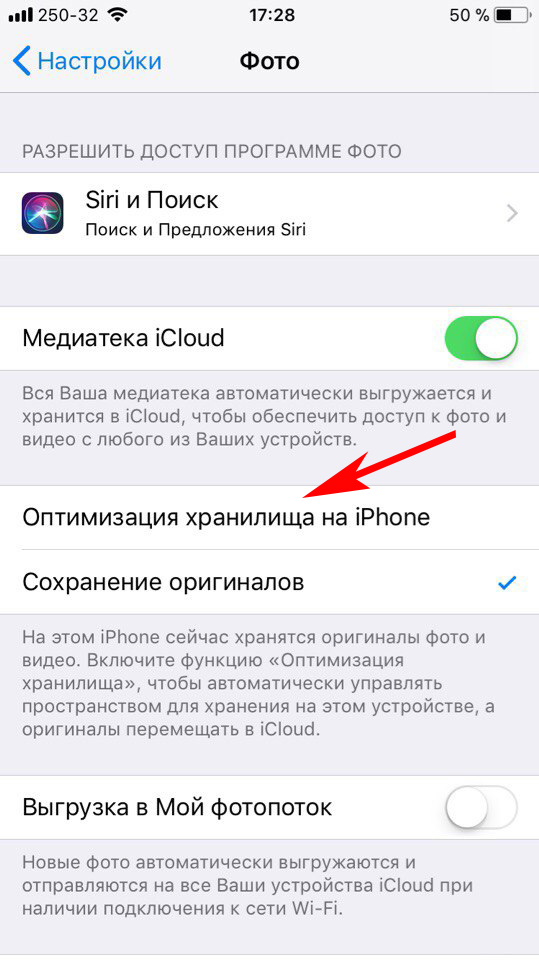
When your photos are uploaded to iCloud, you can only store recent photos on your device. To do this, in the Photos section of Settings, select Optimize storage for iPhone.
If you don't want to spend money on storage iCloud, you can upload unlimited photos to Google Photos for free (but they will be compressed). After uploading to Google Photos, you can also enable automatic removal of photos from the device.
5. Delete application content
In the Storage section iPhone you can see which applications are using the most memory. In some cases, their data will be the reason. If you downloaded movies from iTunes or Netflix, they continue to be stored on your device.
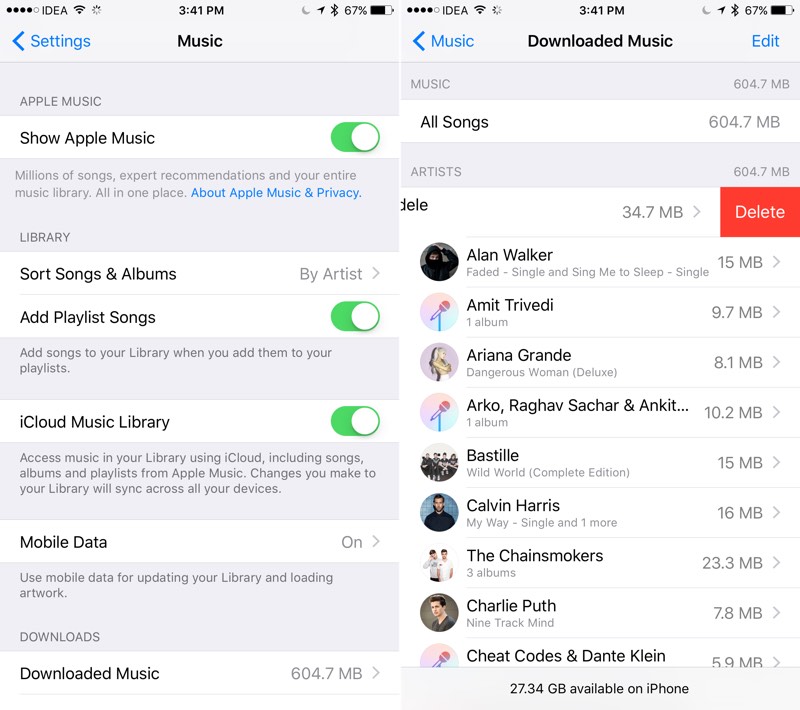
This also applies to podcasts, audiobooks, etc.
You need to go to such applications and manually delete the downloaded files. If apps like Twitter or Facebook take up more than 1GB, you should uninstall and reinstall them.
6. Clear your Safari cache
In Settings, go to the Safari section and click Clear History and Site Data. This will remove all history, cookies and cache from websites.
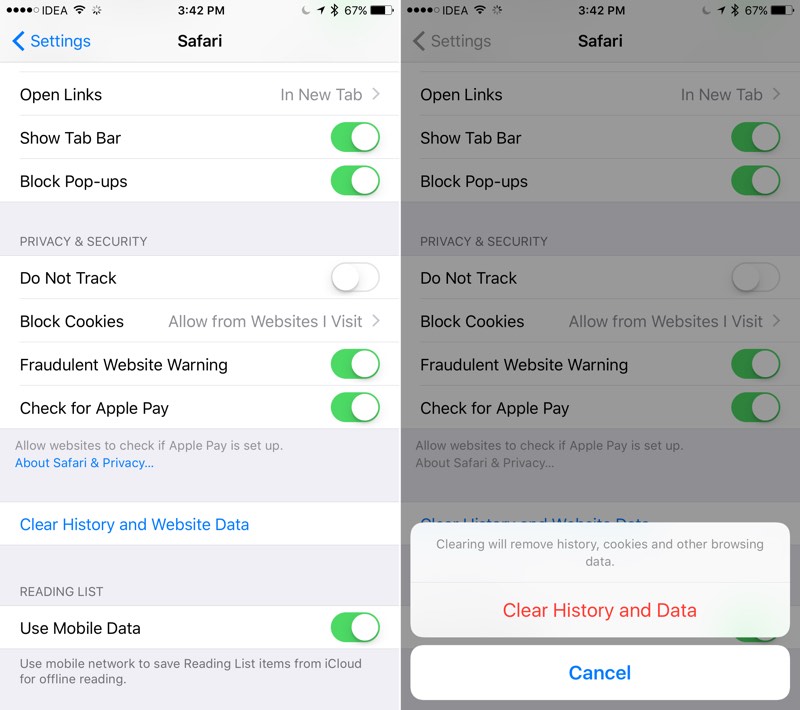
7. Remove the 'live part' of LivePhotos
When you take a Live Photo, you also save three second video and audio. Live Photos is a great feature, but it's not very useful and takes up a lot of space.
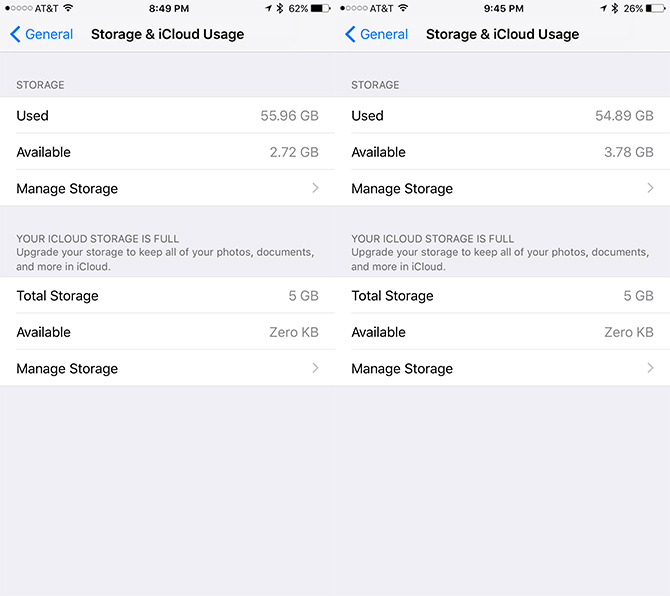
Use the Lean app, which costs $ 1.99. Removing the 'live part' from 4 photos can free up as much as 12MB. If you do this with hundreds of photos, you can easily free up a couple of gigabytes.
8. Empty the folder with recently deleted photos
After you manually delete the photos, be sure to delete them from the Recently Deleted folder. This is the only way to free up memory.
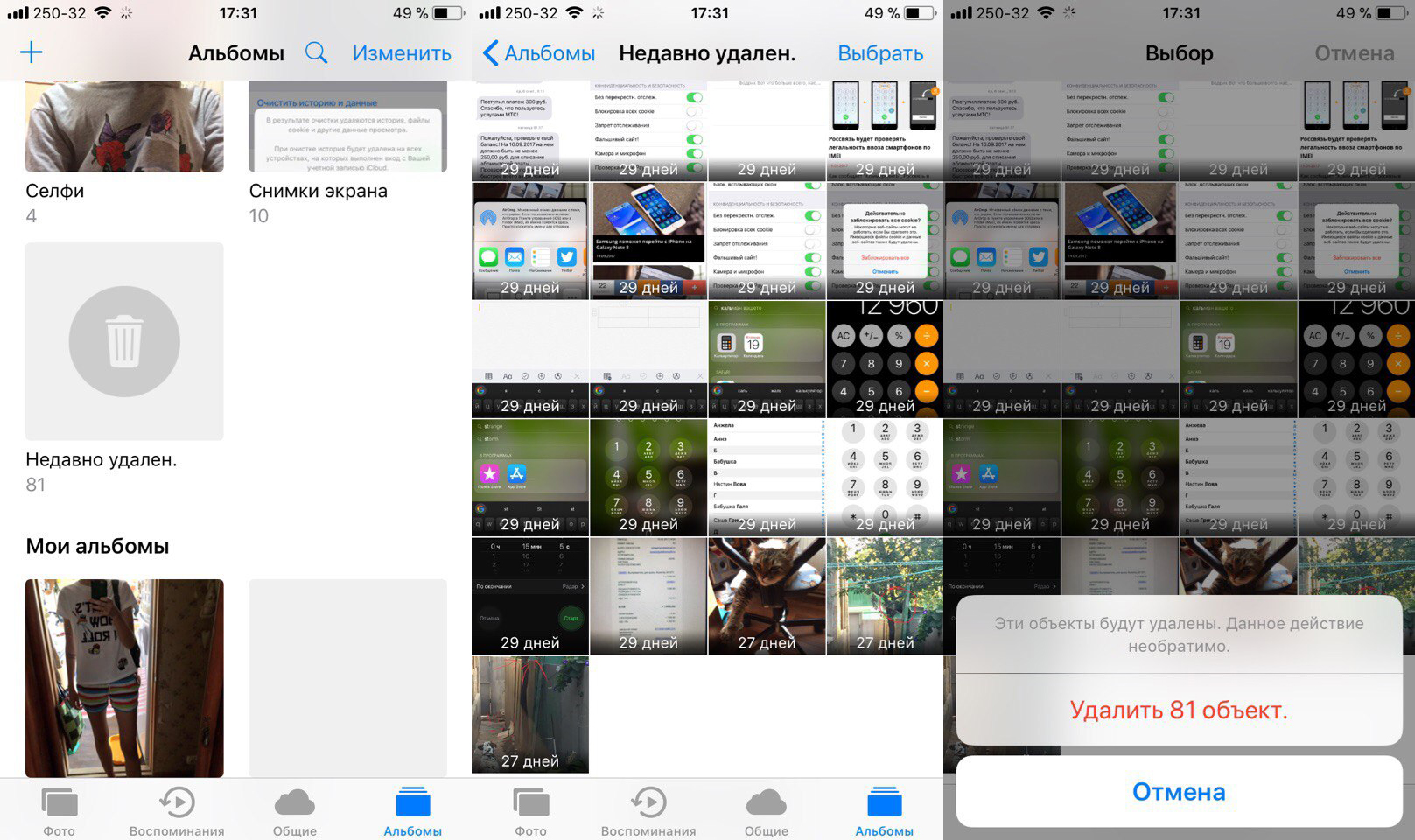
In the Photo app, go to the Recently Deleted album. Select all photos and delete them.
9. Automatically delete old messages
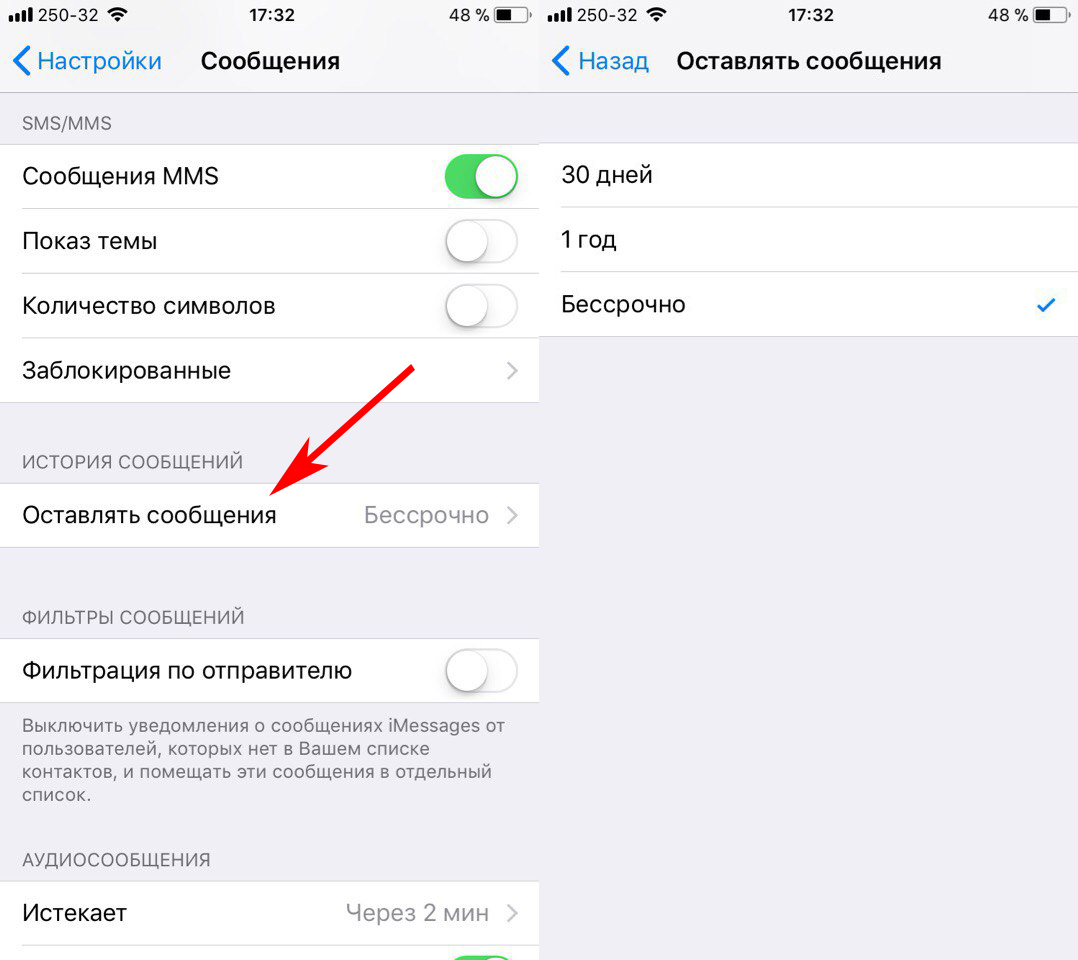
If you do not like to reread old messages, you can configure their automatic deletion. Go to Settings-> Messages-> Leave messages and select 30 days or 1 year.
10. Remove attachments to messages

Go to the Messages application, click Edit and delete old dialogs that contain many files.
Or you can go into a specific dialog, click on the picture above and view all attached files. Select a photo / video and click 'delete'.
11. Remove extra votes Siri
If you downloaded additional voices Siri unnecessarily, it would be a good idea to remove them. One voice can occupy up to 900MB.
Go to Settings-> General-> Accessibility-> VoiceOVer-> Speech select the unwanted voice.
Then tap Edit, swipe in and tap Delete.
12. Optimize storage for Apple Music
If you are using Apple Music, you can customize how much memory your library will take up.
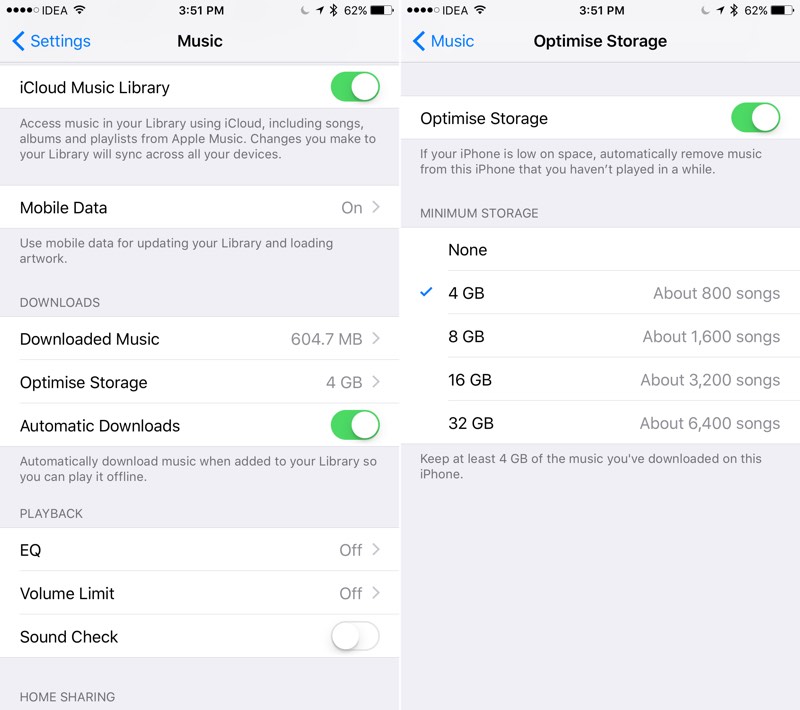
Go to Settings-> Music and select Optimize Storage. You can choose from 4GB to 64GB (depending on the amount of storage on the device). When you reach the limit, iOS will start deleting music that you haven't listened to for a long time.
13. Clear your iTunes cache
If you watch movies on iTunes, the app builds up a cache. It is not visible to the user and can take up to several gigabytes. You can restart your device to clear the cache. Hold the Home and Sleep / Wake buttons (on iPhone 7 this is the Volume Down + Sleep / Wake button) until the device reboots.
14. Disable automatic media download from WhatsApp
If you are in group chats at WhatsApp, you get a lot of videos and images. By default WhatsApp downloads all files and saves them to you in Photos. Go to Settings -> Chats and calls and disable the Save incoming files function.
15. Try downloading a huge app or movie
This method may not work for you. If you're running out of memory, go to App Store and download an app that takes up more memory than your device has. The same can be done by downloading movies in HD from iTunes.
When you do, iOS will automatically clear the cache and junk files to free up memory. After a while, cancel the download.
Coming soon: storing messages in iCloud
This feature is not yet available on iOS 11, but we expect to get it in a couple of weeks with the iOS 11.1 update. The iMessages feature in iCloud will automatically download all your messages to the store. You can delete old dialogs from your device without losing data. When you enter the dialog, messages will instantly be loaded from iCloud. If you've been using your device for several years, Messages can take up to 5GB of storage.
Last option: reset device settings
If 'System' is taking up too much memory, there is an option to reset the device. Go to Settings-> General-> Reset and select Erase Content and Settings.
